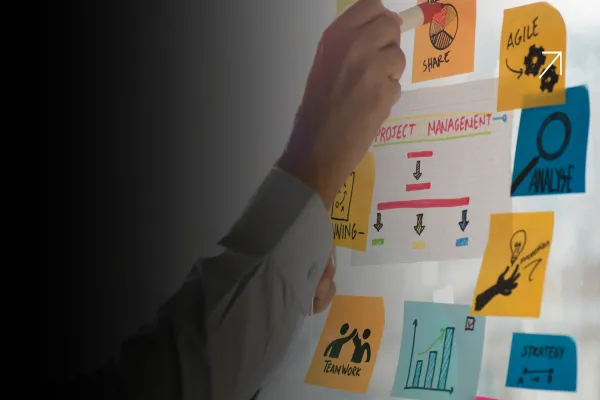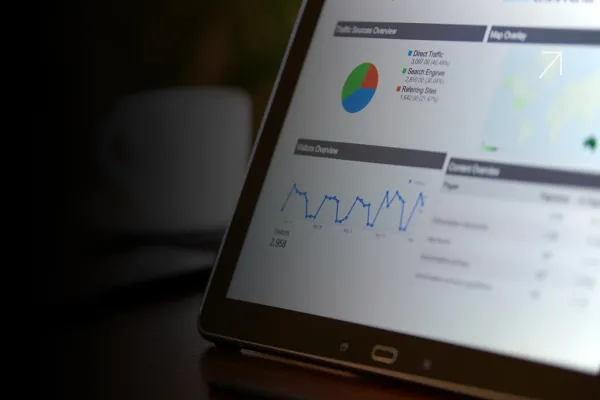Omnichannel Pharma Marketing has stopped being a “future trend.” In India, it’s already the deciding factor between pharma brands that grow and those that stay invisible. Doctors no longer want one-off rep visits with brochures. Patients expect follow-ups across WhatsApp, portals, and apps. Regulators want messages that stay consistent everywhere. The old model of siloed pharma marketing is broken.
That’s why Omnichannel Pharma Marketing is the central playbook for 2025. It’s not about stacking more channels. It’s about orchestrating every physical and digital touchpoint into one connected journey. The winners will be those who treat omnichannel as a system, not a campaign.
The New Reality of Omnichannel Pharma Marketing
Omnichannel marketing in pharma isn’t simply “multi-channel.” It’s about a unified experience, where doctor engagement and patient engagement flow seamlessly across reps, portals, WhatsApp, webinars, and physical events.
Why omnichannel marketing outperforms traditional outreach
Traditional pharma marketing leaned on reps and conferences. But the pandemic accelerated digital adoption, and post-UCPMP 2024, pharma marketers can’t rely on freebies or in-person promotions. Doctors are busy and skeptical. Patients are digitally savvy. Omnichannel marketing meets them where they are, without losing credibility.
How HCP engagement drives the entire omnichannel strategy
Doctors are the core audience. If HCP engagement isn’t consistent, everything else falls flat. Omnichannel Pharma Marketing ensures that no matter how a doctor interacts: whether with a rep in person, a webinar online, or a WhatsApp reminder, it’s part of the same, coordinated journey.
Why compliance is the foundation of omnichannel engagement
Here’s the truth: compliance in pharma marketing is non-negotiable. If every channel works in isolation, the risk multiplies. Omnichannel Pharma Marketing fixes this by centralizing content. That way, whether a message goes out in print, app, or webinar, it’s already approved and consistent. That’s how you move fast without regulatory missteps.
Strategy One: Building a Unified Content Engine
A fragmented content workflow creates fragmented engagement. The backbone of Omnichannel Pharma Marketing is a single source of truth: a unified content engine.
How omnichannel strategy needs a single content backbone
In pharma marketing, dozens of teams produce content, including the brand managers, reps, and agencies. Without a central CMS or DAM, duplication is inevitable, and inconsistencies creep in. A content backbone ensures everyone draws from the same compliant, approved pool.
Turning content into personalised HCP engagement
Omnichannel Pharma Marketing isn’t about blasting the same PDF to every doctor. A cardiologist in Delhi and a GP in Coimbatore need different insights. With a central engine, content can be adapted automatically: by specialty, by region, by format, without starting from scratch. That’s how omnichannel strategy translates into real HCP engagement.
Why speed-to-market matters in omnichannel marketing
In India, delays cost market share. If one company takes 12 weeks to launch a campaign and another does it in 4, the outcome is obvious. Embedding medical-legal-regulatory (MLR) workflows into the content hub means faster approvals, fewer bottlenecks, and consistent omnichannel engagement across every touchpoint.
Strategy Two: Integrating Field Reps with Digital Channels
Reps still matter. In fact, in India, they’re irreplaceable. But their impact multiplies when combined with digital continuity.
How reps and omnichannel engagement work together
A rep’s clinic visit no longer ends the conversation. Omnichannel Pharma Marketing extends it. Doctors get WhatsApp summaries, follow-up emails, or access to a digital portal tied directly to the rep’s message. Instead of being forgotten, the brand stays in the doctor’s daily workflow.
Using omnichannel strategy to boost rep productivity
Reps can only meet so many doctors. But if those visits are linked with webinars, on-demand videos, and CRM-driven reminders, reach expands without adding headcount. Omnichannel marketing doesn’t replace reps, rather it amplifies them.
Case example: blending rep visits with webinars
Think of this journey: A doctor meets a rep who introduces a new therapy. A week later, the same doctor attends a webinar hosted by the pharma company on the same drug class. Later, they receive localized case studies on WhatsApp. That’s how omnichannel engagement transforms one meeting into a long-term relationship.
Strategy Three: Leveraging Digital for Tier 2 and Tier 3 Expansion
The future of India’s pharma growth lies outside metros. Omnichannel Pharma Marketing is the bridge.
Why Omnichannel Pharma Marketing unlocks new markets
Doctors in Tier 2/3 towns are as digitally active as metro doctors, but traditional pharma marketing rarely reaches them consistently. Omnichannel strategies that are combining local offline presence with scalable digital channels can make these doctors reachable and engaged.
Localising omnichannel engagement for regional HCPs
A one-size-fits-all message doesn’t work in India. Doctors want content in their language, contextualized to their practice. Omnichannel marketing makes localization scalable with approved core content adapted across languages and formats without diluting compliance.
How WhatsApp is redefining HCP engagement
For many Tier 2/3 doctors, WhatsApp is the most trusted professional tool. Omnichannel strategies that combine rep visits with WhatsApp updates outperform email-heavy campaigns. Engagement rates in these towns are often 5-6x higher when WhatsApp is part of the mix.
Strategy Four: Data-Driven Personalisation Across Channels
The promise of omnichannel lies in relevance, not just reach. That’s where data steps in.
Why analytics sit at the heart of omnichannel marketing
Without analytics, omnichannel is just noise across more channels. With analytics, every touchpoint is measured: what doctors downloaded, which patients engaged, which content converted to prescriptions. CMOs don’t need vanity metrics. They need proof.
How omnichannel strategy adapts to HCP behaviour
Doctors aren’t identical. One might prefer webinars, another WhatsApp, another detailed PDFs. An omnichannel system uses engagement data to adapt automatically, giving each HCP engagement in the channel they actually value.
Personalisation without compliance risks
Personalisation in pharma can’t be “free-for-all.” It has to work within compliance guardrails. Omnichannel marketing platforms make this possible by using pre-approved assets, configured into tailored journeys, so that the personalization scales safely.
Strategy Five: Measuring ROI in Omnichannel Pharma Marketing
At the end of the day, omnichannel is judged by results.
Why omnichannel engagement outperforms channel silos
A standalone webinar or rep visit is hard to measure. But when they’re integrated, the impact is visible. Doctors who interact across 3+ channels are consistently more engaged and more likely to prescribe. That’s ROI you can show the board.
Connecting pharma marketing to boardroom KPIs
Boards don’t care about clicks or likes. They care about prescription adoption, faster product launches, and adherence improvement. Omnichannel Pharma Marketing ties engagement metrics directly to these KPIs, making marketing a boardroom conversation.
Case example: proving ROI through integrated dashboards
One Indian pharma company used dashboards that combined rep visits, webinar participation, and digital content downloads. They discovered doctors exposed to at least 3 channels prescribed 40% faster. That’s omnichannel ROI: clear, defensible, and outcome-driven.
Conclusion
Omnichannel Pharma Marketing in India is no longer about experimenting with a few channels. It’s about building a connected system that drives HCP engagement, patient trust, and compliance confidence. In 2025, the brands that treat omnichannel as a strategy, not just a campaign, will dominate market share. Those that don’t will spend the next decade playing catch-up.
Your Next Step in Omnichannel Pharma Marketing
The question isn’t whether omnichannel works. The question is: how fast can your teams build it into your pharma marketing backbone? CMOs who act now will own the future of doctor engagement in India. Those who wait will be locked out. Ready to act? Speak with our team!





